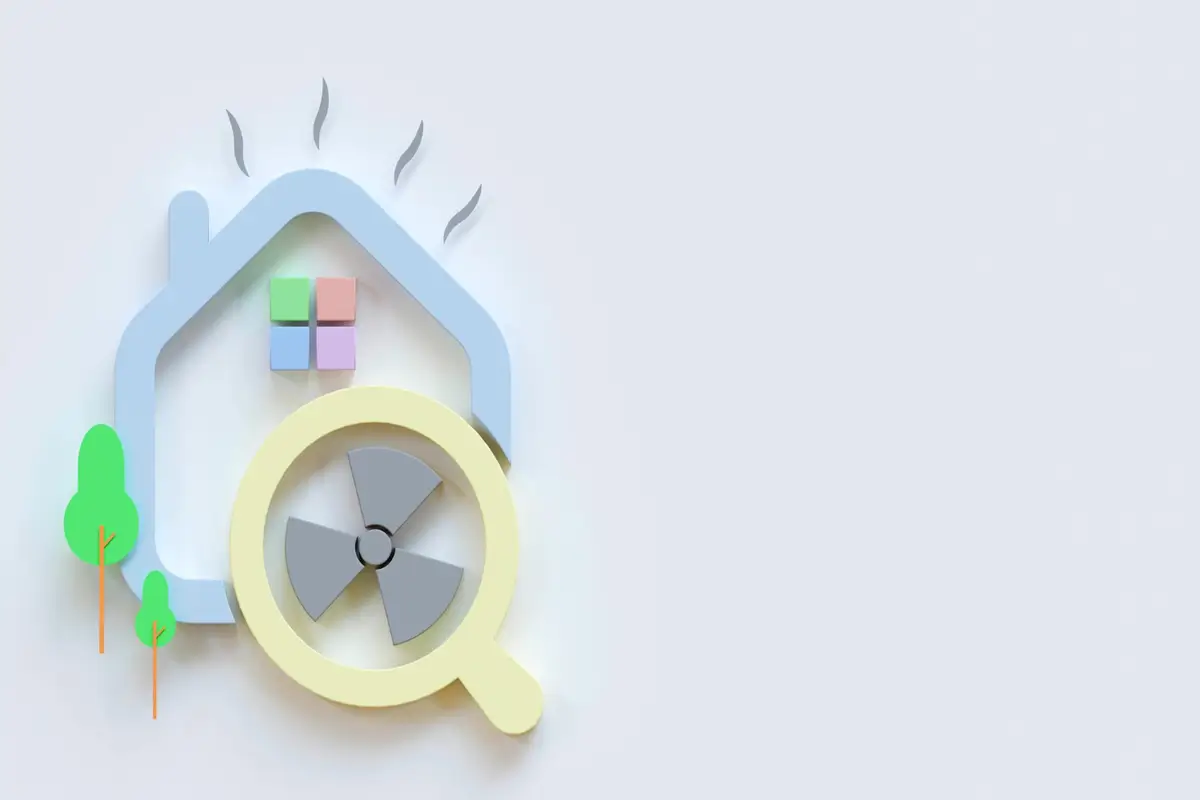Radon poses health risks that too often go unnoticed. So, yes, radon truly is a danger to homeowners. Homeowners often question the real risk of the danger of radon exposure. We believe you want to learn about how radon poses real risks to homeowners. In this blog, we break it down for you. So, let’s start.
What Is Radon?
Radon gas forms when uranium breaks down in the soil beneath our feet. Without specialized equipment, you cannot detect radon since it does not have color, smell, or taste. When your home sits on a uranium-rich earth, radon can find its way through foundation cracks and other entry points.
High radon levels may damage your health when exposed for too long. However, small amounts pose no harm. Studies in the US show radon ranks second as a lung cancer contributor, with smoking being the top factor. In other words, it is the number one cause of lung cancer among non-smokers.
Is Radon Dangerous?
Radon exposure threatens your health when it reaches high levels within your home’s atmosphere. The threat from radon depends directly on its concentration levels in the indoor environment.
Here’s the tricky part: since radon is invisible and odorless, many homeowners don’t know when they inhale it into their homes. Radon is dangerous to your health when high levels linger over time. What should you do to determine if radon poses a threat to you?
What Are Radon Danger Levels?
Radon levels are measured in picocuries per liter (pCi/L). The Environmental Protection Agency (EPA) recommends action at 4 pCi/L. However, you should take measures for radon mitigation even if the test results show levels under 4 pCi/L. This is to be on the safer side, as small amounts of radon exposure can slowly raise your chance of developing lung cancer.
Why Should Homeowners Care About Radon?
As a homeowner, you must pay attention to the danger of radon because it can affect your family’s health and your house’s market worth. Let’s discuss these problems in a little detail.
Health Risks
Radon gas causes more lung cancer in non-smoking people than any other factor. The CDC reports 21,000 deaths from lung cancer each year in the US because of radon exposure. Even continuous small contact with radon will harm your health significantly. Young children, seniors, and people who already have breathing problems are, in particular, more vulnerable.
Decreasing Home Value
Radon exposure issues in a home make selling difficult when buyers know about potential radon problems in the area. Taking care of radon problems before listing your home for sale protects you against problems during home inspections.
How Do You Know If Your Home Has High Radon Danger Levels
The only certain method to determine radon presence in your house is testing. You can find radon test kits online and from home improvement stores. A professional radon testing expert can evaluate you.
DIY Radon Test Kits
There are two main types of radon test kits: short-term and long-term.
- Radon readings from short-term tests show air quality over several days or one week.
- Long-term tests track radon exposure in your home for several months to provide precise measurement results.
Professional Radon Testing
You will gain advantages from professional radon testing when you hire a radon inspection expert. Hiring experienced radon inspectors gives you better results because they have precise testing tools. Consider this path if you want to know how dangerous radon levels are in your house.
How To Reduce the Danger Of Radon In Your Home?
Do not worry if your test reveals radon values above 4 pCi/L. You can use proven methods to decrease radon concentration throughout your house. The popular treatment method to address this problem is radon mitigation.
Radon Mitigation System
A radon mitigation system fixes a fan connected to a vent pipe through the foundation to remove radon gas from underground and safely exhaust it outdoors past any entry points to the home. In numerous situations, a radon mitigation system reduces radon presence by 99%.
Sealing Cracks
Your home will stay safe from radon when you fix foundation crevices plus gaps around windows and doors.
Ventilation
Better air movement throughout your house decreases the amount of radon present indoors.
Do Radon Levels Vary Over Time?
Radon concentration in a confined space can fluctuate over time. You should test your home often because major building projects can influence radon levels. Radon levels increase during winter due to tight home insulation that preserves indoor heat.
Conclusion: Do Radon Danger Levels Concern You?
Radon presents an actual threat, yet regular testing and corrective actions make it a manageable issue. It poses a hidden risk, yet with proper action, you can easily handle it.
Test for radon danger levels and fix any problems to safeguard your home’s value and your family’s well-being.
Radon in your home demands immediate action. When you delay testing, higher levels of radon may affect your home. Having a professional test your home for radon can protect your family’s health.
Contact Main Choice Inspections for your professional radon evaluation now. Our experts will analyze your home air quality and deliver vital safety data. Hire us to safeguard your home from unnecessary dangers.

